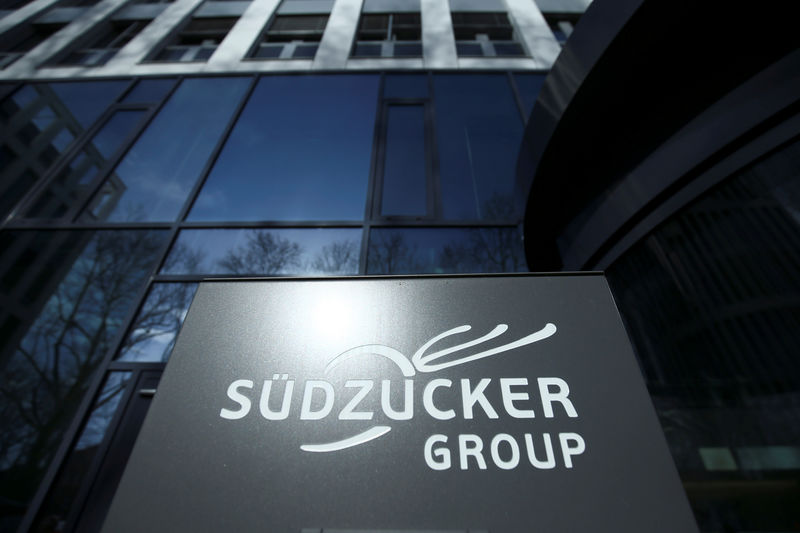By Maytaal Angel
LONDON (Reuters) - Spot sugar prices in the European Union are recovering from last year's record lows as world prices languish, prompting a pick-up in imports to one of the few global regions where output is slumping.
The EU sugar market is restructuring, with Europe's biggest sugar refiner Suedzucker planning to shut five plants next season in a bid to combat overproduction, which soared in 2017/18 after the EU scrapped output and export quotas.
Spot EU white sugar prices were at 422 euros ($474) a tonne in late March, according to price provider S&P Global (NYSE:SPGI) Platts, while global white sugar prices on ICE (NYSE:ICE) are currently at around $330 a tonne, not far off the 2018 decade low of $307.50.
Graphic: EU sugar imports (https://tmsnrt.rs/2WOOs4D)
The rise in spot EU prices is not captured in official European Commission data, which shows average prices at end-January at 312 euros a tonne based on invoices paid by buyers who booked their purchases at the start of the season.
"Commission price data is lagged. At sugar conferences at the moment people talk of low European prices, but in the real world prices have firmed up quite a bit and should continue to do so," said John Stansfield, a sugar analyst at Group Sopex.
The rise in prices follows a poor EU harvest that has left output for the 2018/19 season at around 18 million tonnes, down some 3 million tonnes from 2017/18. The 2019/20 EU harvest is also seen at around 18 million tonnes following reduced beet plantings.
EU sugar stocks meanwhile slumped to 12.7 million tonnes at the end of January from 15.2 million a year earlier, European Commission data shows.
Graphic: World sugar market balance (https://tmsnrt.rs/2CWQVCh)
"The EU market is gradually turning into a balanced situation, which is encouraging. Nobody is making money at these prices," said Julian Price, consultant at julianprice.com and former trader at ED&F Man.
Suedzucker, which plans to reduce output by 700,000 tonnes per year starting next season, expects to make another operating loss in its sugar segment of 200-300 million euros in 2019/20. France's Tereos, the world's second-largest sugar maker, expects a full-year loss for 2018/19.
Agritel analyst Francois Thaury said the EU spot price rise was for now hurting regional sugar makers, many of which sold forward expecting a bumper crop and have been left scrambling for spot supplies to fill sales obligations.
They should eventually benefit, he said, but noted that EU sugar imports were also rising, meaning prices were capped and could come off the boil.
Sugar imports into the EU were at 163,000 tonnes in January, around double the year-earlier level, European Commission data shows. Although the imports are capped by a tariff regime, allocated tariff-free flows can still work to cool the market.
Graphic: EU versus global white sugar prices (https://tmsnrt.rs/2WKQfre)
For the non-EU market, reduced output in a key consuming region such as Europe comes as welcome relief to exporters scrambling for new markets.
Analysts expect the global sugar market to record a deficit of 1.9 million tonnes in 2019/20, but following years of surplus, stockpiles are plentiful, keeping prices stubbornly range-bound near decade lows.
Graphic: EU sugar stocks (https://tmsnrt.rs/2CUZYDQ)
